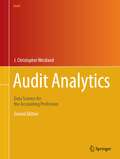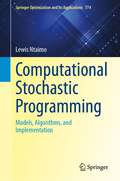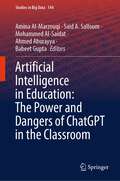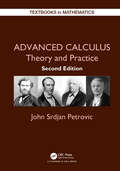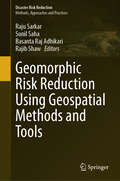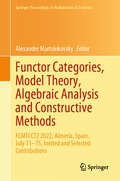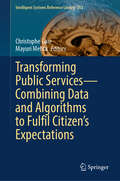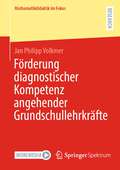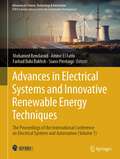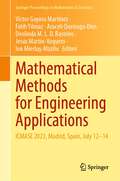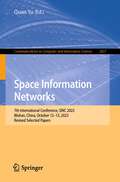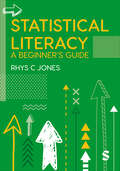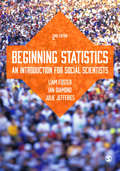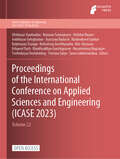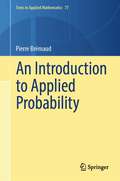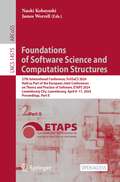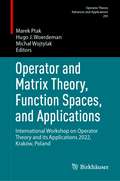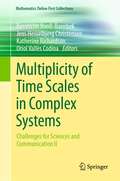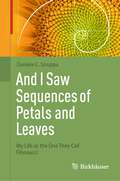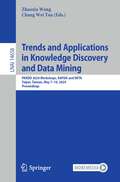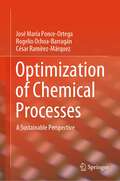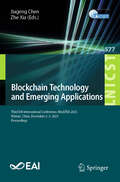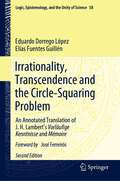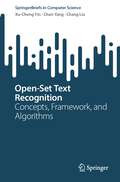- Table View
- List View
Audit Analytics: Data Science for the Accounting Profession (Use R!)
by J. Christopher WestlandThis book, using R and RStudio, demonstrates how to render an audit opinion that is legally and statistically defensible; analyze, extract, and manipulate accounting data; build a risk assessment matrix to inform the conduct of a cost-effective audit program; and more. Today, information technology plays a pivotal role in financial control and audit: most financial data is now digitally recorded and dispersed among servers, clouds and networks over which the audited firm has no control. Additionally, a firm’s data—particularly in the case of finance, software, insurance and biotech firms—comprises most of the audited value of the firm. Financial audits are critical mechanisms for ensuring the integrity of information systems and the reporting of organizational finances. They help avoid the abuses that led to passage of legislation such as the Foreign Corrupt Practices Act (1977), and the Sarbanes-Oxley Act (2002). Audit effectiveness has declined over the past two decades, as auditor skillsets have failed to keep up with advances in information technology. Information and communication technology lie at the core of commerce today and are integrated in business processes around the world. This book is designed to meet the increasing need of audit professionals to understand information technology and the controls required to manage it. This 2nd edition includes updated code and test. Machine learning, AI, and SEC’s EDGAR data are also, improved and updated. The material included focuses on the requirements for annual Securities and Exchange Commission audits (10-K) for listed corporations. These represent the benchmark auditing procedures for specialized audits, such as internal, governmental, and attestation audits. Many examples reflect the focus of the 2024 CPA exam, and the data analytics-machine learning approach will be central to the AICPA’s programs, in the near future.
Computational Stochastic Programming: Models, Algorithms, and Implementation (Springer Optimization and Its Applications #774)
by Lewis NtaimoThis book provides a foundation in stochastic, linear, and mixed-integer programming algorithms with a focus on practical computer algorithm implementation. The purpose of this book is to provide a foundational and thorough treatment of the subject with a focus on models and algorithms and their computer implementation. The book’s most important features include a focus on both risk-neutral and risk-averse models, a variety of real-life example applications of stochastic programming, decomposition algorithms, detailed illustrative numerical examples of the models and algorithms, and an emphasis on computational experimentation. With a focus on both theory and implementation of the models and algorithms for solving practical optimization problems, this monograph is suitable for readers with fundamental knowledge of linear programming, elementary analysis, probability and statistics, and some computer programming background. Several examples of stochastic programming applications areincluded, providing numerical examples to illustrate the models and algorithms for both stochastic linear and mixed-integer programming, and showing the reader how to implement the models and algorithms using computer software.
Artificial Intelligence in Education: The Power and Dangers of ChatGPT in the Classroom (Studies in Big Data #144)
by Amina Al-Marzouqi Said A. Salloum Mohammed Al-Saidat Ahmed Aburayya Babeet GuptaThis book aims to bring together a collection of innovative and cutting-edge research that addresses the various challenges in the application and theoretical aspects of ChatGPT in education. ChatGPT is a large language model developed by OpenAI that has the ability to generate human-like text based on a prompt. This has significant potential for use in the field of education, as it allows for the creation of personalized, interactive learning experiences, automating assessment and grading, and more. In e-learning, ChatGPT is used to provide instant feedback and support to students, as well as generate interactive conversations in the target language for language learning. It is also integrated with existing learning management systems and educational technology platforms to enhance their capabilities. In research, ChatGPT is used for natural language processing and sentiment analysis to gather insights on student learning experiences and educational outcomes. However, it is important to note that there are also ethical and privacy concerns that come with using language models like ChatGPT in education, such as data protection and the potential for bias. Overall, the use of ChatGPT in education has the potential to revolutionize the way we learn, teach, and access information. The book seeks to publish original manuscripts that cover a broad range of topics, from the development of new chatbot technologies and their integration into the classroom, to the examination of the ethical and pedagogical implications of these systems. By compiling the latest developments in the field and highlighting new areas for exploration, this book provides valuable insights and perspectives for researchers, educators, and practitioners working in the field of ChatGPT and education. The ultimate goal is to advance the understanding of ChatGPT and its role in education and to promote its effective and responsible use in the classroom and beyond.
Advanced Calculus: Theory and Practice (Textbooks in Mathematics #12)
by John PetrovicAdvanced Calculus: Theory and Practice, Second Edition offers a text for a one- or two-semester course on advanced calculus or analysis. The text improves students’ problem-solving and proof-writing skills, familiarizes them with the historical development of calculus concepts, and helps them understand the connections among different topics. The book explains how various topics in calculus may seem unrelated but have common roots. Emphasizing historical perspectives, the text gives students a glimpse into the development of calculus and its ideas from the age of Newton and Leibniz to the twentieth century. Nearly 300 examples lead to important theorems.Features of the Second Edition: Improved Organization. Chapters are reorganized to address common preferences. Enhanced Coverage of Axiomatic Systems. A section is added to include Peano’s system of axioms for the set of natural numbers and their use in developing the well-known properties of the set N. Expanded and Organized Exercise Collection. There are close to 1,000 new exercises, many of them with solutions or hints. Exercises are classified based on the level of difficulty. Computation-oriented exercises are paired and solutions or hints provided for the odd-numbered questions. Enrichment Material. Historical facts and biographies of over 60 mathematicians. Illustrations. Thirty-five new illustrations are added in order to guide students through examples or proofs. About the Author:John Srdjan Petrovic is a professor at Western Michigan University.
Geomorphic Risk Reduction Using Geospatial Methods and Tools (Disaster Risk Reduction)
by Raju Sarkar Sunil Saha Basanta Raj Adhikari Rajib ShawThis book explores the use of advanced geospatial techniques in geomorphic hazards modelling and risk reduction. It also compares the accuracy of traditional statistical methods and advanced machine learning methods and addresses the different ways to reduce the impact of geomorphic hazards.In recent years with the development of human infrastructures, geomorphic hazards are gradually increasing, which include landslides, flood and soil erosion, among others. They cause huge loss of human property and lives. Especially in mountainous, coastal, arid and semi-arid regions, these natural hazards are the main barriers for economic development. Furthermore, human pressure and specific human actions such as deforestation, inappropriate land use and farming have increased the danger of natural disasters and degraded the natural environment, making it more difficult for environmental planners and policymakers to develop appropriate long-term sustainability plans. The most challenging task is to develop a sophisticated approach for continuous inspection and resolution of environmental problems for researchers and scientists. However, in the past several decades, geospatial technology has undergone dramatic advances, opening up new opportunities for handling environmental challenges in a more comprehensive manner.With the help of geographic information system (GIS) tools, high and moderate resolution remote sensing information, such as visible imaging, synthetic aperture radar, global navigation satellite systems, light detection and ranging, Quickbird, Worldview 3, LiDAR, SPOT 5, Google Earth Engine and others deliver state-of-the-art investigations in the identification of multiple natural hazards. For a thorough examination, advanced computer approaches focusing on cutting-edge data processing, machine learning and deep learning may be employed. To detect and manage various geomorphic hazards and their impact, several models with a specific emphasis on natural resources and the environment may be created.
Functor Categories, Model Theory, Algebraic Analysis and Constructive Methods: FCMTCCT2 2022, Almería, Spain, July 11–15, Invited and Selected Contributions (Springer Proceedings in Mathematics & Statistics #450)
by Alexander MartsinkovskyThis volume comprises selected contributions by the participants of the second "Functor Categories, Model Theory, Algebraic Analysis and Constructive Methods" conference, which took place at the University of Almería, Spain, in July 2022.The conference was devoted to several seemingly unrelated fields: functor categories, model theory of modules, algebraic analysis (including linear control systems), and constructive category theory, to mention just a few. The fact that these fields are actually related is a very recent realization. The connections between these disciplines are changing in real time, and the goal of this volume is to provide an initial reference point for this emerging interdisciplinary field.Besides research articles, the volume includes two extended lectures: one on constructive methods in algebraic analysis and the other on the functorial approach to algebraic systems theory. Hence, in addition to its interestfor researchers, the volume will also be an invaluable resource for newcomers.
Transforming Public Services—Combining Data and Algorithms to Fulfil Citizen’s Expectations (Intelligent Systems Reference Library #252)
by Christophe Gaie Mayuri MehtaThis book provides a precise portrayal of the current trends and future perspectives of e-Government. It outlines new approaches that optimize public services across diverse sectors. Going beyond traditional boundaries, it offers mathematical models for public services supported by convincing case studies. This book significantly enhances various government services, such as education, healthcare, safety, security, and culture. It also strongly emphasizes safeguarding citizens' personal data, ensuring privacy, and obtaining explicit consent. Tailored for students and academics, the book is an invaluable reference for teaching graduate courses in e-Government, Process Modelling, or Artificial Intelligence. Its impact extends beyond the classroom; civil servants from all domains can find practical insights to navigate the ongoing modernization of public services. Even citizens curious about the transformation in their public services can find this book enlightening. Researchers working in the area of e-Governance can use this book to discover the recent developments in e-Government.
Förderung diagnostischer Kompetenz angehender Grundschullehrkräfte (Mathematikdidaktik im Fokus)
by Jan Philipp VolkmerDiagnostische Kompetenz ist eine der zentralen Kompetenzen von Lehrkräften. Diese Kompetenz hängt von der jeweiligen diagnostischen Situation ab. Das Analysieren von reichhaltigen Schüler*innendokumenten, wie sie zum Beispiel bei der Bearbeitung offener Lernangebote entstehen, wurde als diagnostische Situation bisher kaum betrachtet. Das vorliegende Buch widmet sich daher der Operationalisierung und Förderung diagnostischer Kompetenz bezüglich der Analyse von Schüler*innendokumenten zu offenen Lernangeboten der Arithmetik. Dazu wird eine Operationalisierung der diagnostischen Kompetenz und insbesondere des diagnostichen Denkens als Synthese bisheriger Forschung vorgeschlagen. Die Operationalisierung stützt sich auf die Adaption epistemischer Aktivitäten und einen adaptierten Prozess des Anpassens und Vergleichens. Weiter werden zwei empirische Studien vorgestellt, die die Wirksamkeit verschiedener Interventionen zur Förderung diagnostischer Kompetenz nachweisen können.
Advances in Electrical Systems and Innovative Renewable Energy Techniques: The Proceedings of the International Conference on Electrical Systems and Automation (Volume 1) (Advances in Science, Technology & Innovation)
by Mohamed Bendaoud Amine El Fathi Farhad Ilahi Bakhsh Siano PierluigiThis edited book on “Advances in Electrical Systems and Innovative Renewable Energy Techniques” is an outcome of the selected papers presented at the International Conference on Electrical Systems & Automation, (ICESA 2023) held from 29 to 30, May 2023 at the Faculty of Sciences and technologies, Al Hoceïma, Morocco.This edited book is divided into 2 volumes. This volume will be divided into 3 parts, each devoted to distinct yet interconnected aspects of the subject matter.The first part focuses on various advancements in renewable energy techniques. It explores topics ranging from biomass combustion characteristics and hydrogen production using photovoltaics to the assessment of wave energy potential and the performance evaluation of solar collectors. These research papers not only shed light on the current state-of-the-art technologies but also offer valuable insights into their implementation, efficiency, and potential impact on the energy landscape.The second part focuses on interdisciplinary approaches between electrical and renewable energy systems and includes research chapters on photovoltaic (PV) energy, wind energy, and microgrid systems.For PV systems, several topics and issues are addressed such as modeling of PV systems using single diode model and double diode model; analytical and numerical methods for extraction of PV parameters; extraction of maximum power from PV system using integral SMC strategy, sun-pointing orientation, SuDoKu, and ANN algorithms; and fault detection and classification based on metaheuristic technique, and feedforward neural network.For the wind system, its modeling is first discussed, and then the control of the wind system using direct power, PI, fuzzy logic, sliding mode, and time delay strategies is analyzed.In the third part, the chapters focus on efficient energy management, optimization of microgrids, and the use of advancedtechnologies to improve energy performance. Researchers present innovative solutions to address the challenges of energy efficiency, grid responsiveness, and the integration of new energy sources.
Mathematical Methods for Engineering Applications: ICMASE 2023, Madrid, Spain, July 12–14 (Springer Proceedings in Mathematics & Statistics #439)
by Víctor Gayoso Martínez Fatih Yilmaz Araceli Queiruga-Dios Deolinda M. L. D. Rasteiro Jesús Martín-Vaquero Ion Mierluş-MaziluThese proceedings gather selected, peer-reviewed papers presented at the IV International Conference on Mathematics and its Applications in Science and Engineering – ICMASE 2023, held on July 12–14, 2023 by the University Center of Technology and Digital Arts (U-tad) in Madrid, Spain.Papers in this volume cover new developments in applications of mathematics in science and engineering, with an emphasis on mathematical and computational modeling of real-world problems. Topics range from the use of differential equations to model mechanical structures to the employ of number theory in the development of information security and cryptography. Educational issues specific to the acquisition of mathematical competencies by engineering and science students at all university levels are also touched on.Researchers, practitioners, and university students can significantly benefit from this volume, especially those seeking advanced methods for applying mathematics to various contexts and fields.
Space Information Networks: 7th International Conference, SINC 2023, Wuhan, China, October 12–13, 2023, Revised Selected Papers (Communications in Computer and Information Science #2057)
by Quan YuThis book constitutes revised selected papers from the thoroughly refereed proceedings of the 7th International Conference on Space Information Network, SINC 2023, held in Wuhan, China, during October 12–13, 2023. The 8 full papers and 5 short papers included in this book were carefully reviewed and selected from 73 submissions. The papers present the latest research in the fields of space information networks.
Statistical Literacy: A Beginner′s Guide
by Rhys Christopher JonesIn an increasingly data-centric world, we all need to know how to read and interpret statistics. But where do we begin? This book breaks statistical terms and concepts down in a clear, straightforward way. From understanding what data are telling you to exploring the value of good storytelling with numbers, it equips you with the information and skills you need to become statistically literate. It also: Dispels misconceptions about the nature of statistics to help you avoid common traps. Helps you put your learning into practice with over 60 Tasks and Develop Your Skills activities. Draws on real-world research to demonstrate the messiness of data – and show you a path through it. Approachable and down to earth, this guide is aimed at undergraduates across the social sciences, psychology, business and beyond who want to engage confidently with quantitative methods or statistics. It forms a reassuring aid for anyone looking to understand the foundations of statistics before their course advances, or as a refresher on key content.
Statistical Literacy: A Beginner′s Guide
by Rhys Christopher JonesIn an increasingly data-centric world, we all need to know how to read and interpret statistics. But where do we begin? This book breaks statistical terms and concepts down in a clear, straightforward way. From understanding what data are telling you to exploring the value of good storytelling with numbers, it equips you with the information and skills you need to become statistically literate. It also: Dispels misconceptions about the nature of statistics to help you avoid common traps. Helps you put your learning into practice with over 60 Tasks and Develop Your Skills activities. Draws on real-world research to demonstrate the messiness of data – and show you a path through it. Approachable and down to earth, this guide is aimed at undergraduates across the social sciences, psychology, business and beyond who want to engage confidently with quantitative methods or statistics. It forms a reassuring aid for anyone looking to understand the foundations of statistics before their course advances, or as a refresher on key content.
Beginning Statistics: An Introduction for Social Scientists
by Liam Foster Ian Diamond Julie BantonIn the Second Edition of this bestselling textbook, the authors use real-world examples to introduce basic principles in statistics with no prior knowledge or experience assumed. With an emphasis on describing concepts, showing through example and illustrating points with graphs and displays, this book will provide readers with a step-by-step introduction to using statistics. Chapters address the following questions: Why bother learning statistics in the first place and are they relevant to real life? How do I make sensible tables and informative graphs? What are descriptive and inferential statistics and how are they used? What are regression and correlation anyway?
Proceedings of the International Conference on Applied Sciences and Engineering (Atlantis Highlights in Engineering #22)
This is an open access book.We kindly welcome to all academicians, researchers, scientists, engineers and graduate students in the related fields to submit their original research papers. Applications in engineering science that require expertise in mathematics, physics and chemistry. Its mission is to become a voice of the applied science community, addressing researchers and practitioners in different areas ranging from mathematics, physics, and chemistry to all related braches of the engineering, presenting verifiable computational methods, findings, and solutions.The Conference provided a setting for discussing recent developments in various engineering and applied science topics, including Mathematics, Chemistry, Physics, Computational science, Material science, Environmental Science and Chemical engineering.The submitted conference papers will be subjected to stringent peer review and carefully evaluated based on originality and clarity of exposition. All the accepted papers will be published in the conference proceedings. The conference provides opportunities for the attendants to share new ideas, experiences in Applied Sciences and Engineering and to establish collaboration for the future.
An Introduction to Applied Probability (Texts in Applied Mathematics #77)
by Pierre BrémaudThis book provides the elements of probability and stochastic processes of direct interest to the applied sciences where probabilistic models play an important role, most notably in the information and communications sciences, computer sciences, operations research, and electrical engineering, but also in fields like epidemiology, biology, ecology, physics, and the earth sciences.The theoretical tools are presented gradually, not deterring the readers with a wall of technicalities before they have the opportunity to understand their relevance in simple situations. In particular, the use of the so-called modern integration theory (the Lebesgue integral) is postponed until the fifth chapter, where it is reviewed in sufficient detail for a rigorous treatment of the topics of interest in the various domains of application listed above.The treatment, while mathematical, maintains a balance between depth and accessibility that is suitable for theefficient manipulation, based on solid theoretical foundations, of the four most important and ubiquitous categories of probabilistic models:Markov chains, which are omnipresent and versatile models in applied probabilityPoisson processes (on the line and in space), occurring in a range of applications from ecology to queuing and mobile communications networksBrownian motion, which models fluctuations in the stock market and the "white noise" of physicsWide-sense stationary processes, of special importance in signal analysis and design, as well as in the earth sciences.This book can be used as a text in various ways and at different levels of study. Essentially, it provides the material for a two-semester graduate course on probability and stochastic processes in a department of applied mathematics or for students in departments where stochastic models play an essential role. The progressive introduction of concepts and tools, along with the inclusion of numerous examples, also makes this book well-adapted for self-study.
Foundations of Software Science and Computation Structures: 27th International Conference, FoSSaCS 2024, Held as Part of the European Joint Conferences on Theory and Practice of Software, ETAPS 2024, Luxembourg City, Luxembourg, April 6–11, 2024, Proceedings, Part II (Lecture Notes in Computer Science #14575)
by Naoki Kobayashi James WorrellThe two open access volumes LNCS 14574 and 14575 constitute the proceedings of the 27th International Conference on Foundations of Software Science and Computation Structures, FOSSACS 2024, which took place in Luxembourg in April 2024.The 24 full papers included in this book were carefully reviewed and selected from 79 submissions. They were organized in topical sections as follows: Part I: Infinite games; categorical semantics; automata and synthesis; Part II: Types and programming languages; logic and proofs; infinite-state systems.
Operator and Matrix Theory, Function Spaces, and Applications: International Workshop on Operator Theory and its Applications 2022, Kraków, Poland (Operator Theory: Advances and Applications #295)
by Marek Ptak Hugo J. Woerdeman Michał WojtylakThis volume features presentations from the International Workshop on Operator Theory and its Applications that was held in Kraków, Poland, September 6-10, 2022. The volume reflects the wide interests of the participants and contains original research papers in the active areas of Operator Theory. These interests include weighted Hardy spaces, geometry of Banach spaces, dilations of the tetrablock contractions, Toeplitz and Hankel operators, symplectic Dirac operator, pseudodifferential and differential operators, singular integral operators, non-commutative probability, quasi multipliers, Hilbert transform, small rank perturbations, spectral constants, Banach-Lie groupoids, reproducing kernels, and the Kippenhahn curve. The volume includes contributions by a number of the world's leading experts and can therefore be used as an introduction to the currently active research areas in operator theory.
Multiplicity of Time Scales in Complex Systems: Challenges for Sciences and Communication II (Mathematics Online First Collections)
by Bernhelm Booß-Bavnbek Jens Hesselbjerg Christensen Katherine Richardson Oriol Vallès CodinaNote to the interested reader to have a look at the companion to this volume Challenges for Sciences and Communication I | ISBN: 978-3-031-28048-1.This highly interdisciplinary volume brings together a carefully curated set of case studies examining complex systems with multiple time scales (MTS) across a variety of fields: materials science, epidemiology, cell physiology, mathematics, climatology, energy transition planning, ecology, economics, sociology, history, and cultural studies. The book addresses the vast diversity of interacting processes underlying the behaviour of different complex systems, highlighting the multiplicity of characteristic time scales that are a common feature of many and showcases a rich variety of methodologies across disciplinary boundaries. Self-organizing, out-of-equilibrium, ever-evolving systems are ubiquitous in the natural and social world. Examples include the climate, ecosystems, living cells, epidemics, the human brain, and many socio-economic systems across history. Their dynamical behaviour poses great challenges in the pressing context of the climate crisis, since they may involve nonlinearities, feedback loops, and the emergence of spatial-temporal patterns, portrayed by resilience or instability, plasticity or rigidity; bifurcations, thresholds and tipping points; burst-in excitation or slow relaxation, and worlds of other asymptotic behaviour, hysteresis, and resistance to change. Chapters can be read individually by the reader with special interest in such behaviours of particular complex systems or in specific disciplinary perspectives. Read together, however, the case studies, opinion pieces, and meta-studies on MTS systems presented and analysed here combine to give the reader insights that are more than the sum of the book’s individual chapters, as surprising similarities become apparent in seemingly disparate and unconnected systems. MTS systems call into question naïve perceptionsof time and complexity, moving beyond conventional ways of description, analysis, understanding, modelling, numerical prediction, and prescription of the world around us. This edited collection presents new ways of forecasting, introduces new means of control, and – perhaps as the most demanding task – it singles out a sustainable description of an MTS system under observation, offering a more nuanced interpretation of the floods of quantitative data and images made available by high- and low-frequency measurement tools in our unprecedented era of information flows.
And I Saw Sequences of Petals and Leaves: My Life as the One They Call Fibonacci
by Daniele C. StruppaIn this captivating historical novel, Daniele Struppa skillfully weaves a fictional autobiography, bringing Fibonacci to life with vivid details of his upbringing and adult years in Medieval Europe. As we explore the historical context of Fibonacci's time, we delve into the intriguing aspects of a bygone era, painting a compelling picture of a man whose contributions to mathematics continue to resonate today. From his groundbreaking work on congruent numbers to the famous numerical sequence that bears his name, the author invites readers to imagine the creative sparks that ignited Fibonacci's mathematical innovations. When historical evidence is elusive, accuracy and passion are seamlessly combined, offering plausible scenarios grounded in documented facts. A meticulously crafted apparatus of notes distinguishes fact from fiction, providing readers with a clear guide to navigate this enthralling reconstruction of Fibonacci's life. Step into the medieval world of Leonardo Fibonacci, one of the most celebrated mathematicians in history, and discover the man behind the mathematical genius. Mathematicians and curious readers alike will appreciate the allure of Fibonacci's mathematical brilliance.
Trends and Applications in Knowledge Discovery and Data Mining: PAKDD 2024 Workshops, RAFDA and IWTA, Taipei, Taiwan, May 7–10, 2024, Proceedings (Lecture Notes in Computer Science #14658)
by Zhaoxia Wang Chang Wei TanThis book constitutes the workshops that have been held in conjunction with the 27th Pacific-Asia Conference on Knowledge Discovery and Data Mining, PAKDD 2023, which took place in Osaka, Japan, during May 25–28, 2023. For RAFDA 2024, Workshop on Research and Applications of Foundation Models for Data Mining and Affective Computing, 15 submissions have been received and 9 full papers have been accepted for publication. For IWTA 2024, International Workshop on Temporal Analytics, 4 full papers have been accepted from a total of 6 submissions.
Optimization of Chemical Processes: A Sustainable Perspective
by José María Ponce-Ortega Rogelio Ochoa-Barragán César Ramírez-MárquezThis textbook introduces readers to a comprehensive framework for the application of deterministic optimization strategies in the field of chemical processes, with a strong emphasis on sustainability.The book establishes a vital connection between fundamental deterministic optimization principles, optimization tools, and real-world application instances, all within the context of environmentally responsible practices. The approach put forth in this book is exceptionally versatile, allowing for the use of many optimization software and deterministic techniques.Contained in the book are many fundamental optimization concepts, encompassing linear programming, nonlinear programming, integer programming, and multi-objective optimization, all tailored to promote sustainable decision-making. Furthermore, the book provides practical examples illustrating the application of these techniques within sustainable chemical processes as tutorials.The textbook also explores the utilization of popular optimization software platforms such as GAMS, MATLAB, and Python, demonstrating how these tools can be leveraged for eco-friendly process optimization. Through this comprehensive framework, readers can not only acquire the skills needed to optimize a wide range of processes but also learn how to do so with sustainability at the forefront of their considerations. This approach streamlines the optimization process, eliminating unnecessary complications along the way and ensuring that environmental and ethical considerations are integral to the decision-making process.
Blockchain Technology and Emerging Applications: Third EAI International Conference, BlockTEA 2023, Wuhan, China, December 2-3, 2023, Proceedings (Lecture Notes of the Institute for Computer Sciences, Social Informatics and Telecommunications Engineering #577)
by Jiageng Chen Zhe XiaThis book constitutes the refereed proceedings of the Third International Conference on Blockchain Technology and Emerging Applications, BlockTEA 2023, held in December 2-3, 2023 in Wuhan, China. The 10 regular papers presented were carefully reviewed and selected from 41 submissions. Blockchain technology has been emerging as a potential technology to be applied in various domains, including finance, computer science, electronic engineering, agriculture, healthcare and more. The blockchain-based applications are able to aid the current systems and networks by leveraging the benefits provided by blockchain technology, such as a decentralized, immutable, and cryptographically secured ledger.
Irrationality, Transcendence and the Circle-Squaring Problem: An Annotated Translation of J. H. Lambert’s Vorläufige Kenntnisse and Mémoire (Logic, Epistemology, and the Unity of Science #58)
by Eduardo Dorrego López Elías Fuentes GuillénThis publication, now in its second edition, includes an unabridged and annotated translation of two works by Johann Heinrich Lambert (1728–1777) written in the 1760s: Vorläufige Kenntnisse für die, so die Quadratur und Rectification des Circuls suchen and Mémoire sur quelques propriétés remarquables des quantités transcendentes circulaires et logarithmiques. The translations, as in the first edition, are accompanied by a contextualised study of each of these works and provide an overview of Lambert’s contributions, showing both the background and the influence of his work. In addition, by adopting a biographical approach, it allows readers to better get to know the scientist himself.Lambert was a highly relevant scientist and polymath in his time, admired by the likes of Kant, who despite having made a wide variety of contributions to different branches of knowledge, later faded into an undeserved secondary place with respect to other scientists of the eighteenth century. In mathematics, in particular, he is famous for his research on non-Euclidean geometries, although he is likely best known for having been the first who proved the irrationality of pi. In his Mémoire, he conducted one of the first studies on hyperbolic functions, offered a surprisingly rigorous proof of the irrationality of pi, established for the first time the modern distinction between algebraic and transcendental numbers, and based on such distinction, he conjectured the transcendence of pi and therefore the impossibility of squaring the circle.
Open-Set Text Recognition: Concepts, Framework, and Algorithms (SpringerBriefs in Computer Science)
by Xu-Cheng Yin Chun Yang Chang LiuIn real-world applications, new data, patterns, and categories that were not covered by the training data can frequently emerge, necessitating the capability to detect and adapt to novel characters incrementally. Researchers refer to these challenges as the Open-Set Text Recognition (OSTR) task, which has, in recent years, emerged as one of the prominent issues in the field of text recognition. This book begins by providing an introduction to the background of the OSTR task, covering essential aspects such as open-set identification and recognition, conventional OCR methods, and their applications. Subsequently, the concept and definition of the OSTR task are presented encompassing its objectives, use cases, performance metrics, datasets, and protocols. A general framework for OSTR is then detailed, composed of four key components: The Aligned Represented Space, the Label-to-Representation Mapping, the Sample-to-Representation Mapping, and the Open-set Predictor. In addition,possible implementations of each module within the framework are discussed. Following this, two specific open-set text recognition methods, OSOCR and OpenCCD, are introduced. The book concludes by delving into applications and future directions of Open-set text recognition tasks.This book presents a comprehensive overview of the open-set text recognition task, including concepts, framework, and algorithms. It is suitable for graduated students and young researchers who are majoring in pattern recognition and computer science, especially interdisciplinary research.
